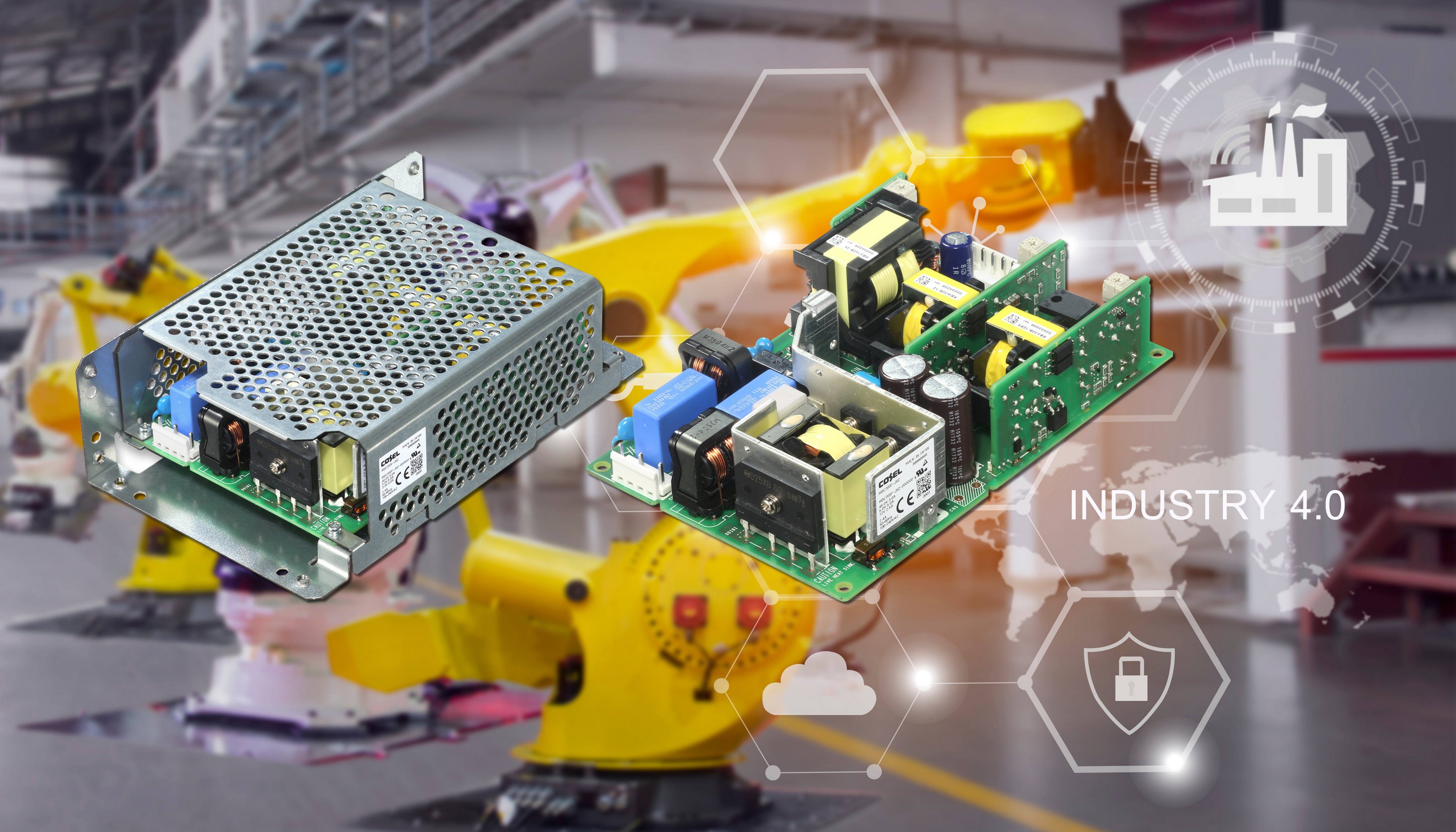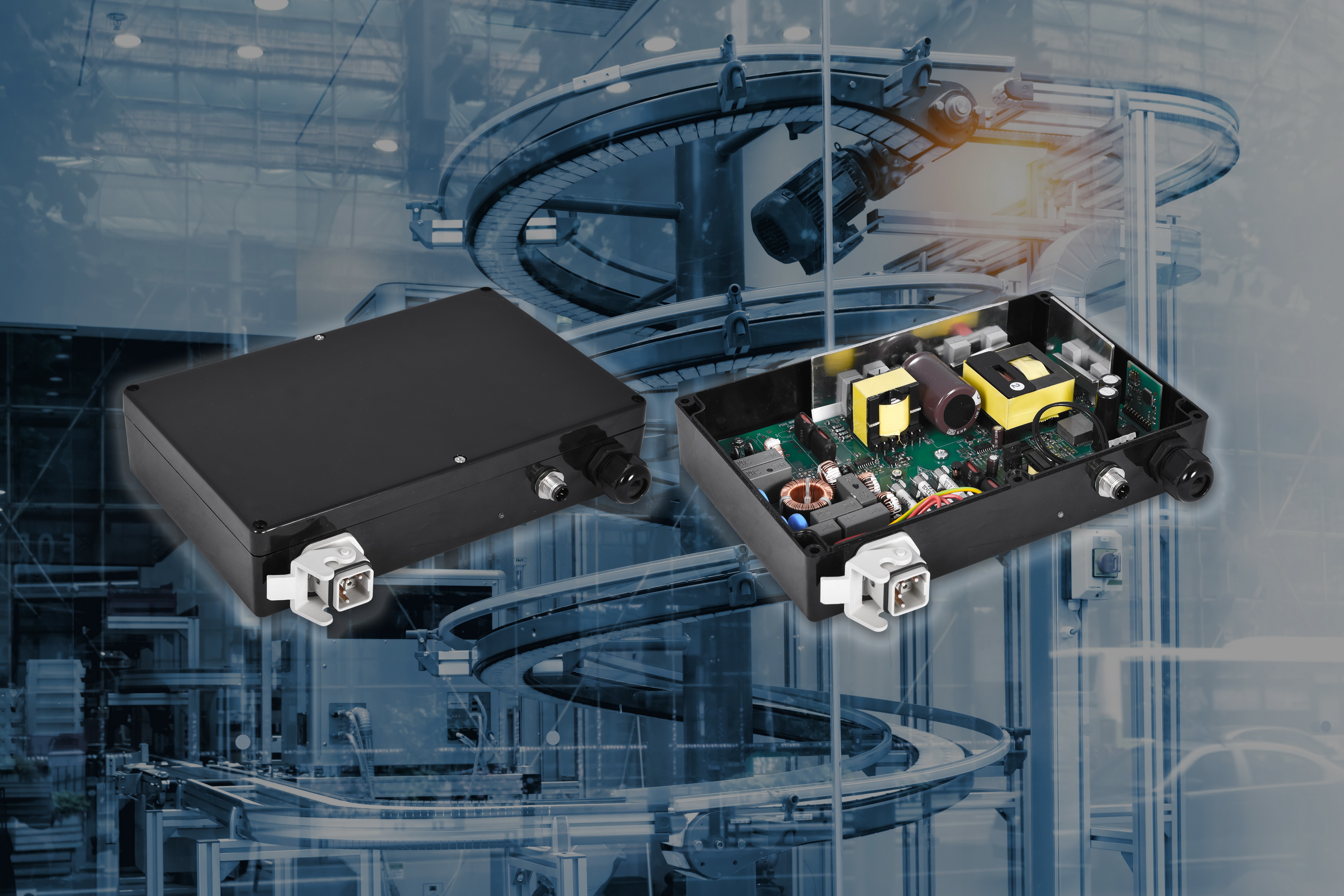Innovation will power the next revolution
Increased automation in industry to create smart factories will rely on technical innovation by power supply manufacturer, says Patrick Le Fèvre, chief marketing and communications officer, Powerbox
Power supplies are a core component within any electronics application which means that the power industry often has to develop solutions years before particular applications reach the market. This is a big challenge and to achieve it, and support customers, power designers have to work closely with system and equipment manufacturers, while at the same time analyse business trends to define what power solutions will be required in the coming years in the various industry sectors.
With a lot of uncertainty in the global economy - trade tensions, a lack of qualified operators, for example - the transformation of the industrial landscape from conventional to a smart model is accelerating. A study published by the Capgemini Digital Transformation Institute, estimates that within the next five years smart factories could add as much as $1.5 trillion to the overall industry. This is significant and if only a portion of that amount is represented by power supplies it will be considerable growth. It will, however require a lot of technical innovation from power supplies manufacturers to meet customers’ expectations.
Industry 4.0 is still at an early stage, even though some are already talking about Industry 5.0 which will focus on the co-operation between man and machine. Despite Industry 4.0’s infancy, though the growing number of applications is impressive. A lot has been written about Industry 4.0 and intelligent power solutions but since 2015 we have seen other segments, such as medical, moving towards higher levels of intelligent automation and a growing numbers of robotics which require power supplies that meet both industrial and medical safety approvals.
Small and medium sized robotic equipment is becoming more common across all industries. We are used to robots operating in the automotive or heavy industries and there is a myriad of smaller robots accomplishing complex tasks, assisting people to improve life (e.g. home healthcare robotics helping disabled people in daily tasks) and even helping surgeons in complex operations, some even being performed by remote control miles away from the surgery theatre. The surgical robotic segment alone is expected to grow from $3.9 billion in 2018 to $6.5 billion by 2023, which is only a fraction of the 600,000 robotic units projected in 2023.
Smart power to small and medium robots
In both industrial and medical segments there is a strong demand from systems designers for a new generation of power supplies with built-in functionalities, requests for higher flexibility levels in configuration, and more communication interfaces.
The industrial and medical segments are influenced, at one point or another, by the internet of things (IoT). For connected devices, whether operating from a few Watts to multi-kW, communication is very important. We are used to CAN Bus or PMBus but in the smart factory, power supplies will become an active part of the machine to machine (M2M) architecture embedding radio communication and using much faster bus communication that is currently in practice.
Today, power systems used within the car industry are able to control and test lithium-ion battery charging during the car assembly process. They operate as an autonomous equipment transferring charging information data to the next work station to continue charging and testing without disruption. All power supplies communicate via radio transmission, making it possible for car manufacturers to physically move charging equipment to accommodate ever changing production needs.
Another interesting area is the new generation of small and medium sized robots deployed in various industries and the medical sector. The level of integration requires power supply manufacturers to integrate more features, such as IGBT drivers with high isolation in addition to normal power channels. Designers also require flexibility in terms of output voltage combinations (see Figure 1).
Adding challenges to challenges
Small and medium sized robots are used differently in various industries, therefore robotics equipment manufacturers often require power supplies to comply to industrial standards such as EN62477-1 (or Over-Voltage Category 3 / OVC III) making it possible to connect the equipment directly to the distribution panel, but also with the new EN62368-1 which was originally created for audio, video and ICT equipment. There are also medical standards such as IEC 60601-1.
Additionally, power designers have to consider a large raft of safety and operational standards, adding yet another level of complexity to an already challenging environment.
Smart industry also means organising factories, with site developers optimising factory and workshop layouts to increase flexibility and efficiency. Examples include minimising the main power cabling to equipment, and exchanging Ethernet and other data transmission cabling for ruggedised and secure RF communications.
Industrial RF communications networks will develop to facilitate M2M communications and although power supplies might not need built-in RF transmission capability, they will need a higher level of interaction with their surroundings compared to now. It could become a must for certain applications, as it has in the car industry.
RF communication is an interesting research area for power designers to explore, and similarly, how power supplies will follow the machine-to-machine evolution.
Adding intelligence
Smart factory automation is already well established in many industries, but with the progress in artificial Intelligence (AI), remote communication and the growing demand for shorter customer lead times, it is predicted to explode in coming years. Similarly, the growth of automated parcel hubs is expected to rise spectacularly. The rapid development of e-commerce has contributed to the creation of highly automated hubs with conveyers, sorting switches and many other types of equipment which require efficient and intelligent power solutions to be able to work in demanding environments.
Parcel hub designers and hub operators face multiple challenges in having to deal with a large variety and types of equipment. The new generation of parcel hubs are built on a very sophisticated architecture. Instead of having a 100m long conveyer belt, the new lines are composed of shorter individual segments that are five to 10m long, and turned on and off on demand when a parcel is transported from point A to point B. Each segment is powered by a DC motor requiring the use of an advanced power supply which has to meet the complex requirements of the parcel hub environment.
 Figure 1: Cosel’s RBC200F has triple isolated outputs for small and medium robotic and factory automation.
Figure 1: Cosel’s RBC200F has triple isolated outputs for small and medium robotic and factory automation.
Traditionally, DC motors below 1,000W are powered by a single phase AC/DC power supply. To simplify installation, reduce unbalanced phase loading and for better optimisation of energy from the grid, parcel hub designers require that all power supplies for DC motors have a three-phase input, whatever the power level. In consideration of energy saving and reducing peak loads, hub designers require power supplies to include peak energy control and energy storage. They are able to store energy when motors are decelerating or stopping, but also to deliver high energy levels when DC motors are activated. This is usually achieved by capacitors or supercapacitor banks partly controlled by the microprocessor in charge of the power supply energy management (see Figure 2).
 Figure 2: The ENI250A24 designed by Powerbox for e-commerce hubs conveyors uses microprocessor controller and energy recycling.
Figure 2: The ENI250A24 designed by Powerbox for e-commerce hubs conveyors uses microprocessor controller and energy recycling.
Those two examples illustrate the changes in demand from systems designers, the levels of innovation required, and the challenges that power supplies manufacturers will face. This exciting time for power designers encourage them to think not just outside of the box, but to add more to the box.










